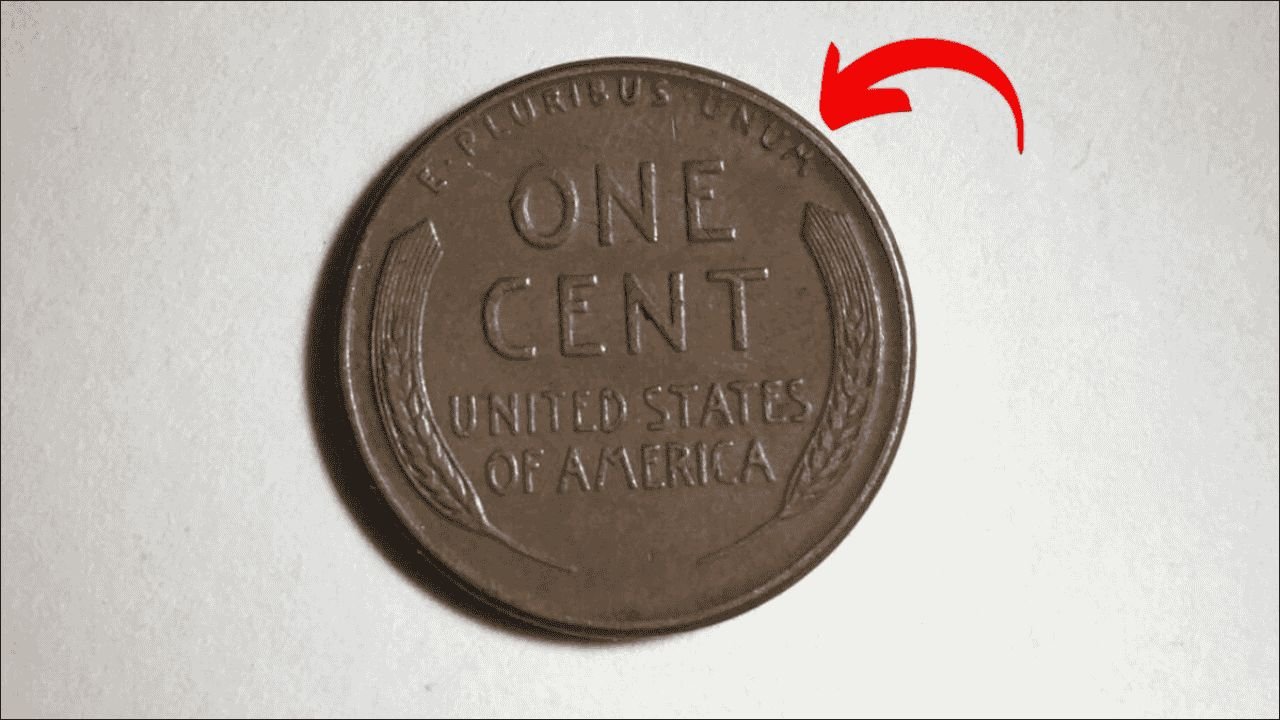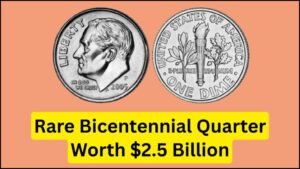Imagine rifling through your loose change, grabbing a grimy penny, and realizing it’s worth more than a luxury car—or even a house! Sounds like a wild dream, right? But with the Lincoln Wheat Penny, that dream could be reality. Some of these unassuming coins, minted between 1909 and 1958, have sold for a jaw-dropping $530,000 at auction.
Even crazier? They might still be jingling in your pocket or stashed in that dusty coin jar on your dresser. Let’s dive into the thrilling world of the Lincoln Wheat Penny, uncover why it’s a numismatic legend, and learn how to spot one of these hidden treasures.
The Lincoln Wheat Penny: A Coin with a Story
A Centennial Celebration
In 1909, America was buzzing with excitement over Abraham Lincoln’s 100th birthday. To honor the beloved president, the U.S. Mint rolled out the Lincoln Wheat Penny, designed by sculptor Victor David Brenner. This wasn’t just any coin—it was the first U.S. currency to feature a real person’s face, breaking from the tradition of symbolic figures like Lady Liberty.
With Lincoln’s iconic profile on the front (obverse) and two wheat stalks framing “ONE CENT” on the back (reverse), the coin earned its catchy “Wheat Penny” nickname.
A Design That Stood the Test of Time
The Lincoln Wheat Penny was minted for nearly five decades, from 1909 to 1958, surviving two World Wars, the Great Depression, and America’s rise as a global superpower. Billions were produced across three mints: Philadelphia (no mint mark), Denver (D), and San Francisco (S). Its elegant design, symbolizing agricultural abundance, made it a cultural staple. In 1959, the wheat stalks were swapped for the Lincoln Memorial, ending the Wheat Penny era.
The $530,000 Penny: A Wartime Whoopsie
The 1943 Bronze Penny Blunder
The Lincoln Wheat Penny’s biggest claim to fame is the 1943 Bronze Penny—a coin so rare it’s the holy grail of numismatics. During World War II, copper was critical for military gear, so the U.S. Mint switched to zinc-coated steel for 1943 pennies, creating the silvery “steel pennies.” But here’s where things get juicy:
a handful of 1942 bronze planchets (blank coin discs) were accidentally left in the presses and stamped with the 1943 date. These oopsie-daisy coins, made of copper when they shouldn’t have been, are now worth a fortune.
Why So Valuable?
Only about 15–20 authentic 1943 Bronze Pennies are known to exist across all three mints, making them insanely rare. One sold for $530,000 at auction, and others have fetched even more—like a Denver-minted specimen that went for $840,000 in 2021. Their value skyrockets due to:
- Extreme Rarity: Fewer than two dozen exist.
- Historical Significance: A wartime error tied to America’s WWII efforts.
- Collector Frenzy: Numismatists go wild for unique minting mistakes.
Other Valuable Wheat Pennies to Watch For
The 1909-S VDB: A Designer’s Drama
Another star is the 1909-S VDB penny. Brenner’s initials (VDB) were boldly placed on the reverse, sparking public outcry over “self-promotion.” The Mint yanked them after just days, but not before 484,000 were minted in San Francisco. This low mintage makes the 1909-S VDB a collector’s darling, with values ranging from $1,000 to $50,000 based on condition.
The 1955 Doubled Die: A Blurry Bonanza
The 1955 Doubled Die penny is a fan favorite because its error is visible without a magnifying glass. A misalignment during die creation caused the date and lettering to appear doubled, creating a striking effect. These coins can fetch $1,000 to $125,000, depending on their grade.
Key Dates and Mint Marks
Here’s a quick cheat sheet for other valuable Wheat Pennies:
| Year | Mint Mark | Notable Feature | Value Range |
|---|---|---|---|
| 1909 | S VDB | Rare initials | $1,000–$50,000 |
| 1914 | D | Low mintage | $5,000–$150,000 |
| 1922 | No D | Missing mint mark | $500–$10,000 |
| 1931 | S | Low mintage | $100–$5,000 |
| 1955 | Doubled Die | Visible error | $1,000–$125,000 |
How to Spot a $530,000 Penny in Your Change
The Magnet Test
Want to play treasure hunter? Grab a magnet! Most 1943 pennies are steel and will stick to it, but a rare bronze penny won’t. If your 1943 penny stays put, you might be onto something big.
Weight and Color Check
A genuine 1943 Bronze Penny weighs about 3.11 grams (use a precise digital scale) and has a coppery, reddish-brown hue. Steel pennies are lighter (2.7 grams) and silvery. Beware of copper-plated fakes—always double-check with the magnet test.
Mint Mark Matters
Check under the date for a tiny “D” (Denver) or “S” (San Francisco). The 1943-D bronze penny is a unicorn, with only one known example, valued in the millions. Philadelphia coins have no mint mark.
Avoid Counterfeits
Fakes are out there, like 1948 pennies altered to look like 1943s or steel pennies copper-plated to deceive. If your coin passes the magnet and weight tests, get it authenticated by pros like PCGS or NGC.
What to Do If You Find a Rare Penny
Handle with Care
Don’t clean your coin—ever! Cleaning can slash its value. Handle it by the edges with clean hands or cotton gloves and store it in a non-PVC coin holder.
Get It Graded
Professional grading services like PCGS or NGC will verify authenticity and assign a grade (1–70) based on condition. A 1943 Bronze Penny in circulated condition might fetch $100,000, but a pristine one could hit $500,000+.
Selling Your Treasure
Ready to cash in? Work with reputable auction houses like Heritage Auctions or Stack’s Bowers. Document the coin’s provenance (history of ownership) and set a reserve price to protect your investment.
Why Are These Pennies Still Out There?
You’d think coins worth half a million bucks would’ve been snatched up by now, but some are still in circulation! Why? Many people don’t check their change closely, and these pennies blend in with common ones. They’ve been found in lunch money, cereal box prizes, and old family collections. Estate sales, bank rolls, and forgotten piggy banks are prime hunting grounds.
Conclusion: Start Your Penny Hunt Today
The Lincoln Wheat Penny isn’t just a coin—it’s a time capsule, a wartime relic, and a potential life-changer. With values reaching $530,000 and the chance they’re still hiding in your change, it’s time to get curious. Next time you grab a coffee or empty your pockets, take a second to check those pennies. Who knows? You might just find a tiny copper ticket to a fortune. Happy hunting!
FAQs: Your Lincoln Wheat Penny Questions Answered
How Do I Know If My 1943 Penny Is Copper?
Use a magnet—steel pennies stick, copper ones don’t. Check the weight (3.11 grams for copper, 2.7 for steel) and look for a coppery color. Get it authenticated by PCGS or NGC to confirm.
Are All Wheat Pennies Valuable?
Most are worth a few cents, but rare ones like the 1943 Bronze, 1909-S VDB, or 1955 Doubled Die can be worth thousands or more, depending on condition.
Can I Find a $530,000 Penny in Circulation?
It’s rare but possible! These coins have turned up in change, old collections, and bank rolls. Check dates, mint marks, and materials carefully.
What Should I Do If I Find a Rare Penny?
Don’t clean it! Store it in a protective holder, get it professionally graded, and consider selling through a reputable auction house or dealer.
Where Can I Learn More About Coin Collecting?
Check out the U.S. Mint’s website, “The Official Red Book” for coin values, or join numismatic communities like PCGS or NGC forums.




